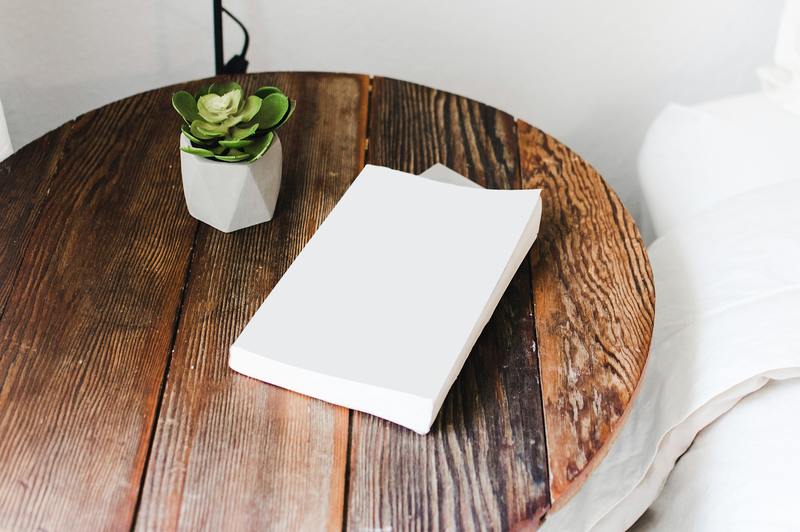This article will guide you on how to restore coffee table from bubbly water damage. Most coffee tables are made of wood, and wood is an organic material and can be vulnerable to damage when exposed to water or too much moisture.
Dealing with water damage on wood can be frustrating because it is often inevitable and unexpected. Imagine a heavy downpour of rain getting into the wood, causing it to bubble up.

Water damage in wood can be less of a concern if you know to fix water-damaged wood.
6 Steps To Repair Water Damaged Coffee Table
If you see water damage on your coffee table, you can perform the following methods shown below to save your table from further damage.
To check water damage, you may check this article can help you on how to detect water damaged wood.
Step #1. Dry the wood
Water can damage wood and weaken its foundation. Consider drying it thoroughly before anything else.
Eliminate moisture from it by wiping it with dry clothes and letting it dry under the sun instead of using artificial means like a hair dryer or blower.
Note that the table should dry completely, but not too quickly because the wood can break if you dry it too fast. It will help if you take adequate time and patience in drying it to achieve a good result.
Step #2. Look for molds and mildew.
Once the table is dry, check it and examine whether there are molds and mildews that can develop. Molds and mildews could worsen the damage, so treat them before spreading to the whole table.
This article can provide information on how to remove mold from water easily.
Step #3. Sand the surface
When water gets into the wood, there can be inconsistencies on its surface which explains why sanding the affected part of the table is necessary. You may use sandpaper or a sander for sanding the surface of the table.
Rub the affected part of the table until it becomes entirely smooth to be ready for restoration. Clear your table from dust after sanding as there can be sawdust remains.
Step #4. Apply wood oil
A furniture oil can revive the ideal color of the wood. You can buy furniture oil from a hardware store or any wood furniture accessory store.
When applying the oil, you may use a piece of cloth or a rug and spread it on the whole table.
Step #5. Seal the oil with wood moisturizer
To make wood water-resistant and maintain its actual color, you may apply a wood moisturizer. Apply the moisturizer all over the table, ensure that you don’t skip any spots, and let it air-dry.
Step #6. Apply wood polish
For the table’s final touch, you may use furniture polish. Before applying furniture polish, ensure that every part of the table is covered with moisturizer and dry the table thoroughly.
Apply a sufficient amount of polish all over the table. Doing this can make your table look new again.
After polishing, you can bring it back inside your house.
Applying Polyurethane For Wood Finishes
Polyurethane does not make hardwood waterproof, but it can make wood water-resistant. Polyurethane can protect the wood from scratches and discoloration, provide hardwood protection, repel water, and prevent water absorption.
One layer of polyurethane isn’t enough because it’s a thin layer and may have minor holes. Small scratches can allow water to penetrate the surface if you only have one coat.
Adding at least three coats of polyurethane makes the wood impervious as the layer can get thicker and more cohesive. The protection it provides lasts a long time, so you won’t need to sand and refinish for a long time.
Polyurethane appears to be a clear thin liquid coating that can shine in wood finishes and display a golden tone. You may choose between oil-based and water-based polyurethane.
Using Oil-Based Polyurethane Finishes
Oil-based polyurethane coatings offer excellent scratch resistance, making them a wise choice for wood floors, cabinets, countertops, or railings where durability is essential. Oil-based polyurethane coatings can help you achieve a golden glow in a few coats.
If you want to apply multiple coats, you need to allow extra curing time, but oil-based polyurethane is so strong that one coat can already be enough to get the job done for low-impact applications.
Oil-based polyurethane dries slowly. One coat dries in about six hours, and additional coats are only allowable in about six hours, depending on room conditions.
Oil-based polyurethane requires a lot of patience to get the best results.
Using Water-Based Polyurethane Finishes
Water-based polyurethane can provide a hard protective shield. If you want a hard shell look using this water-based product, you need numerous coats to produce that effect.
You may want to use water-based polyurethane if you don’t want to use messy and pungent solvents. Water-based polyurethane finishes are effortless to apply, and you can use only soap and warm water to clean up after.
Conclusion
Learning how to restore coffee table from bubbly water damage can help you get rid of the damaging effects of water damage on your coffee table. The first thing to consider is to dry the wood thoroughly by wiping it with a piece of cloth and letting it sit under the sun.
If you don’t see the presence of molds and mildews, you can now sand it using sandpaper. Rub the wooden surface until it looks smooth and even.
It is advisable to add wood oil, wood moisturizer, and wood polish to give your coffee table an elegant finish. To minimize water damage on your coffee table, you may try applying polyurethane to your wood.
Polyurethane finish can either be oil-based or water-based. Choose the type of finish that can fit your needs.
